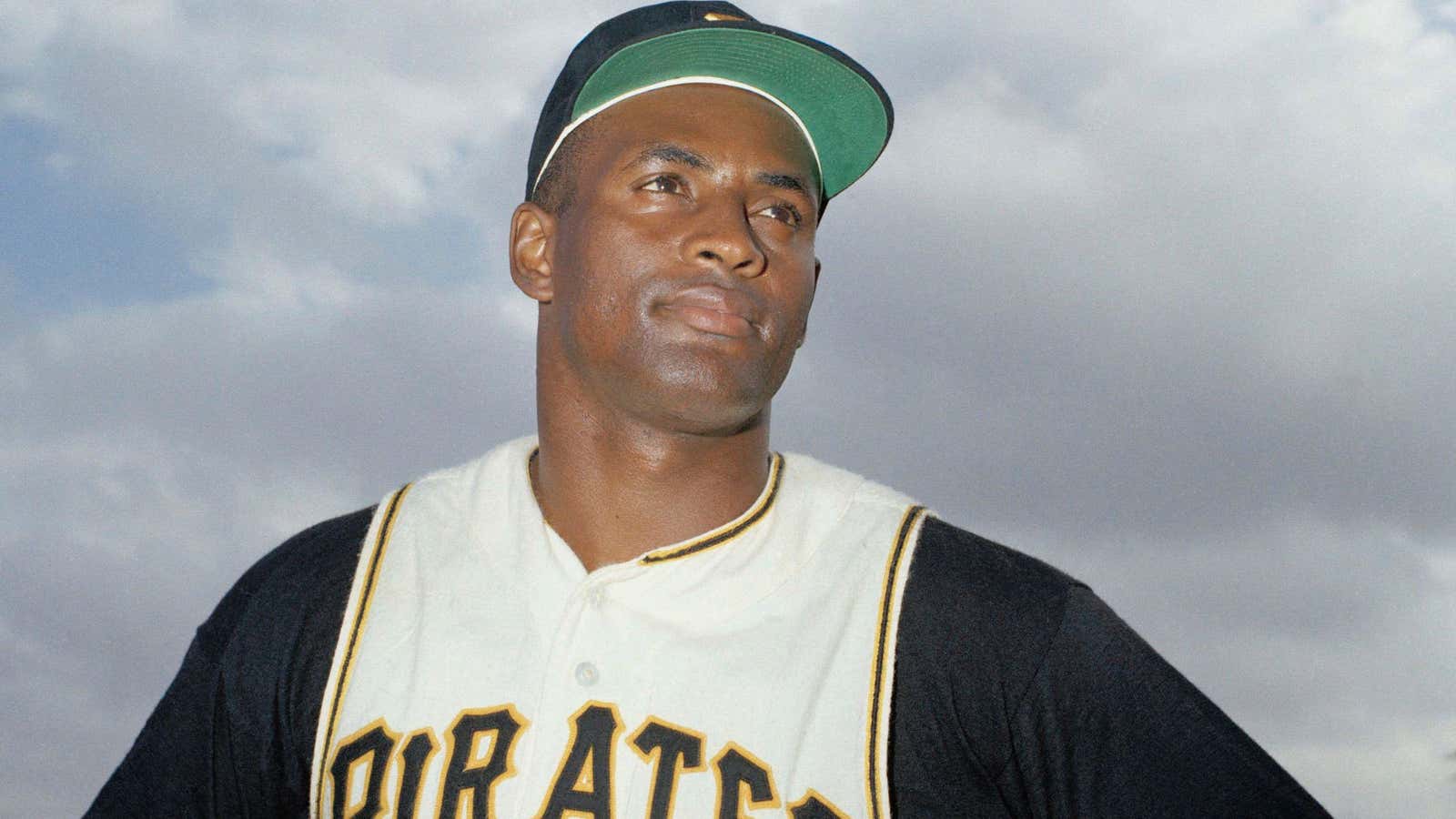Forty six years after his death, baseball’s Roberto Clemente isn’t as celebrated as other Hall of Famers like Babe Ruth and Willie Mays. In many important ways, however, his contributions to the sport—and American culture—were more significant.
Clemente—honored in a Google Doodle today—was born in Puerto Rico and became one of the first Latin stars in US sports. Originally introduced as “Bobby” Clemente when he debuted in 1955 by an establishment unfamiliar and uncomfortable with Hispanic players, he helped pave the way for future generations of players from Latin America and the Caribbean.
After leading the Pittsburgh Pirates to a World Series win in 1971, Clemente gave a famous televised interview in the locker room. Before answering the reporter’s questions, he addressed his parents in Spanish. You can see it at the 1:51 mark here:
It was a milestone for baseball, and hispanics in the US, says historian David Maraniss, in an interview with AARP:
I thought that moment was the essence of Roberto Clemente and symbolizes why he is so revered in all of Latin America. He strived throughout his career to get the recognition he thought he wasn’t getting. Then he has this one great moment on the world television stage and he chooses to speak in Spanish—to thank his parents and sons, to honor all those that came before him in baseball. It was such an expression of pride in who he was and where he was from that everyone I talked to—especially the Latin ballplayers—both young and old, remembers that moment with great clarity.
Clemente was also a pioneer among athletes in using his fame for the benefit of society. It was in the service of helping others that he died on New Year’s Eve, 1972, when the plane he chartered to fly supples to survivors of an earthquake in Nicaragua disappeared into the sea. Baseball honors Clemente’s sacrifice by naming its annual award for sportsmanship and community work after him.
His noble life and death can obscure his reputation on the field, where he was a fearsome hitter and graceful outfielder. He hit .317 over his 18 year career—winning the National League batting title four times—and finished with 240 home runs and exactly 3,000 hits. His career WAR (a measure of his total contributions to his team) of 94.5 ranks him 40th all time, ahead of Joe DiMaggio and Pete Rose. The great baseball writer Roger Angell described him as playing “a kind of baseball none of us had ever seen before… As if it where a form of punishment for everyone else on the field.”
Months after his death, Clemente became the first Latino player elected to the Hall of Fame, with the normal five-year waiting period waived. His body was never recovered from the sea.
